

There are lies, damn lies and statistics, goes a well-known phrase. And while nothing beats actually riding a bike around the track for getting a really good feel for its performance, it’s nice to have the back-up of the real facts that can paint a bigger picture of what’s really going on. So we put the 125, 250s, 350s and 450s on the rolling road dyno – hence the road bike rear tyre. We measured both power and torque right through the rev range to see how the bikes performed.

We also tried every single different map they come with, if they have adjustable maps that it. A dyno can’t really tell much in the way of throttle response or engine braking, which are all vital components of how a bike performs on the track. And there is also no way of channeling air flow to simulate what it’s like when it’s moving, which can affect the power. But a dyno is still a useful tool. The figures are quoted in CV for power, which is virtually – but not precisely – a 1:1 conversion. Check out our findings…
MX1 power
In the MX1 class it’s clear the see the ultimate power put out by the Husqvarna and KTM, peaking at around 54bhp. The new Suzuki tops out at around 51bhp, 1bhp less than the 350 KTM and Husky which rev on further and have much less mid range. You can clearly see the mid-range dip in the KTM and Husky which is where the Japanese bikes excel. The Austrians reckon this is where a rider needs to be able to get harder on the power for exiting turns. The shape of the curve can often be altered using different ignition maps.
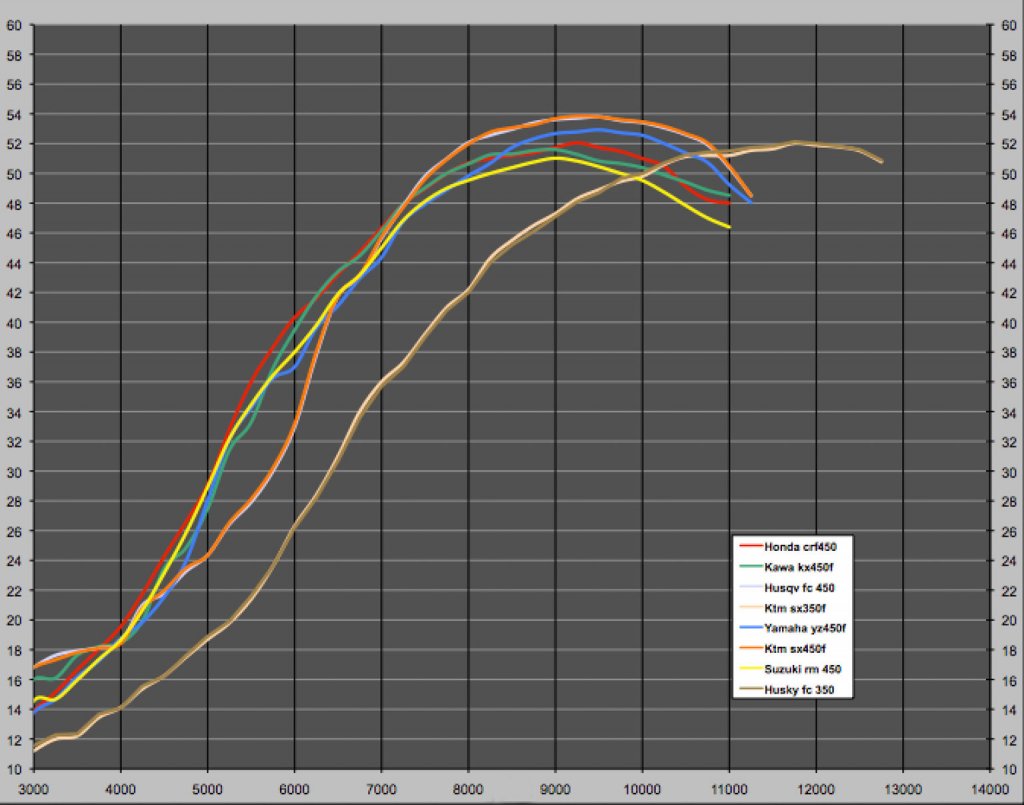
MX1 torque
You can just see precisely how much peak torque every 450 puts out – there’s not much between them in terms of peak torque identical! But the Japanese bikes have more torque lower in the rev range than the Austrian 450s. You can see just how different the 350s are, too.
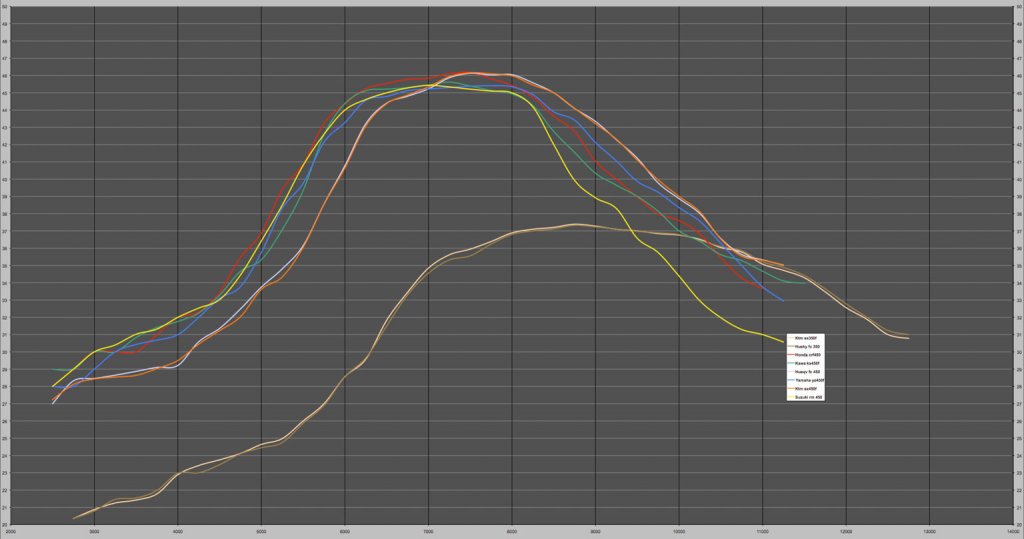
MX2 power
Power is crucial in the MX2 class and the KTM and Husqvarna clearly deliver with around 41bhp. They make more power than all the other bikes virtually the whole way through the rev range, apart from a small dip at 8000rpm. And they rev on further, too. You can see how the Honda lacks in low-end, too, which you can feel on track. The Suzuki is truly shocking and great news for aftermarket tuners!
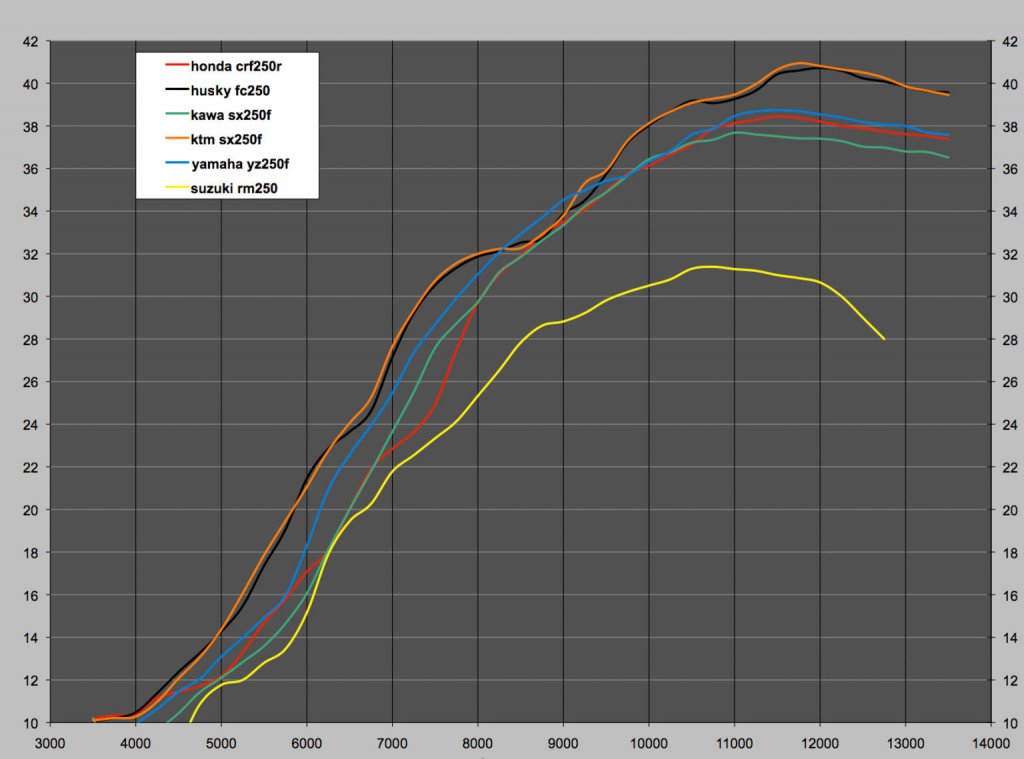
MX2 torque
Once again it’s the mighty KTM SXF250 and Husqvarna FC250 that put out more torque than all their rivals. But you can see how much grunt the Kawasaki and Yamaha have at low revs. Poor old Suzuki, last again…
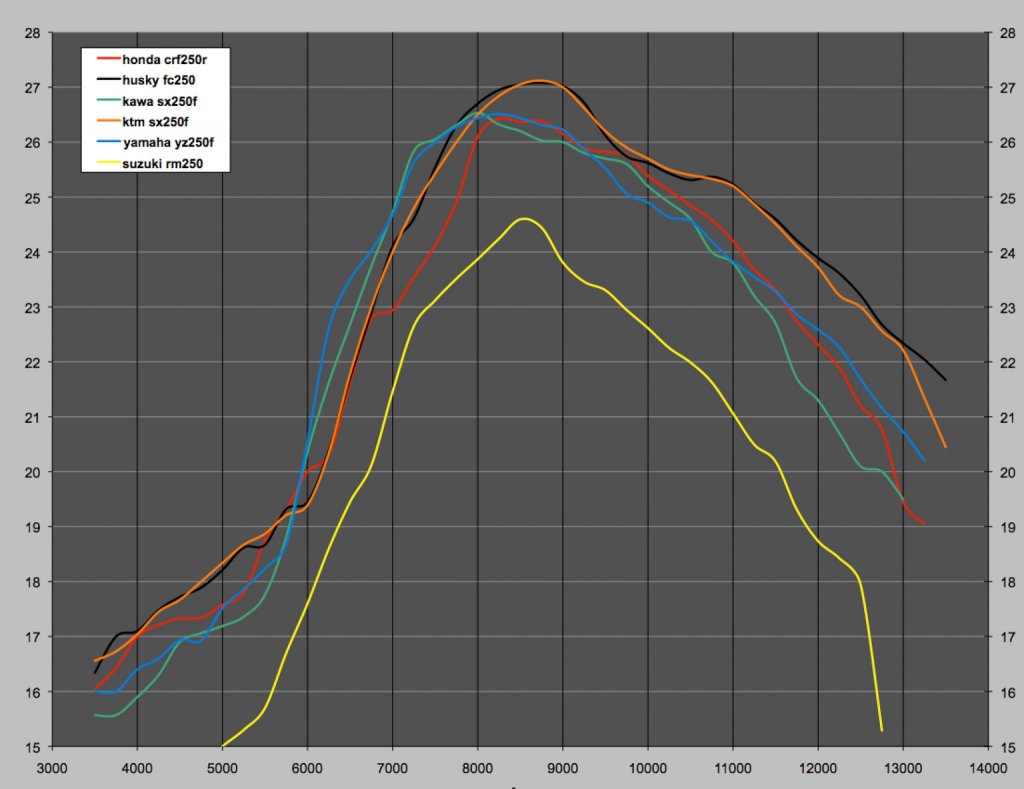
125 power
The power curve of the 125s shows how much more the KTM and Husky make than the Yamaha, and how much more power they put out right through the rev range. The mid-range of the Euro bikes is way more than the YZ125 which has a very straight power curve. It’s almost a line!
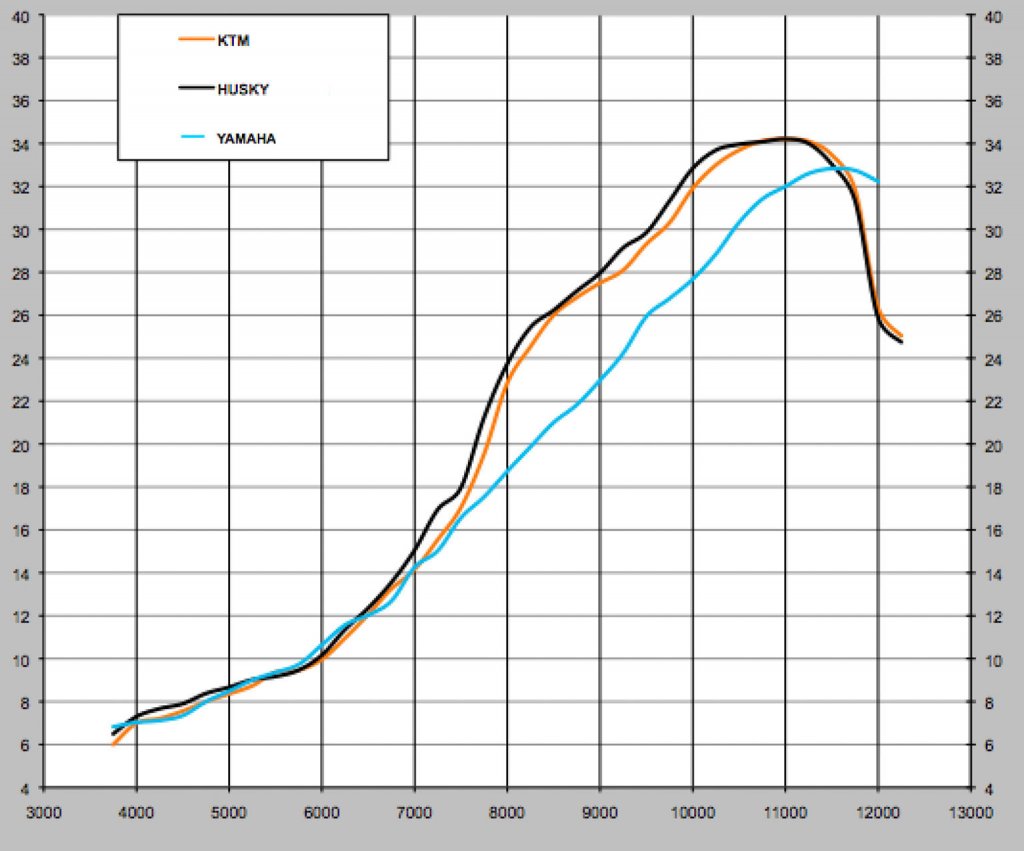
125 torque
It’s no surprise the much more modern European bikes have the upper hand in torque as well as power. But there are lots of tuners who know how to get more out the Yamaha.
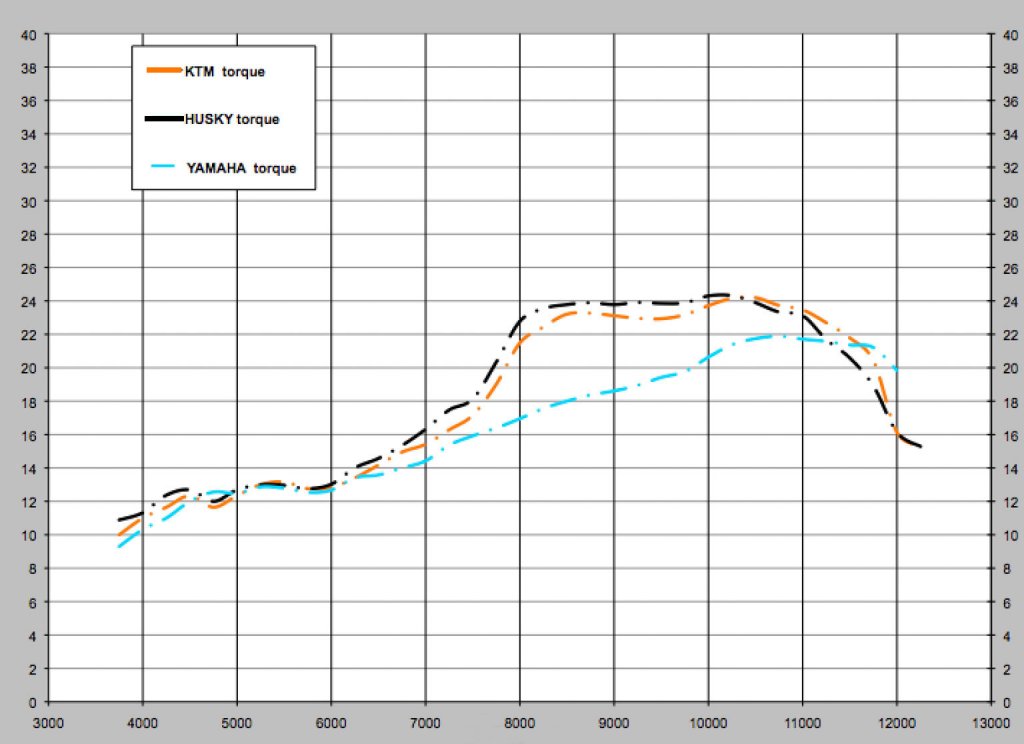
Weight: The truth is out there!
We also did what most manufacturers truly fear which was to weight the bikes rather than believe their claims. Using motorsport scales, the weight on the front and rear wheels was measured to see the front/ rear percentage balance. And of course the total weight in Kg. The bikes were weighed ready to ride, with all fluids and fuel. Of course, heavier tyres and tubes can make a big difference and we couldn’t check what each manufacturer had put inside the tyres. But it’s a grat guide to the real-world weights of the bikes.
It doesn’t take a genius to work out that the KTM is the lightest bike in every class, followed closely by the almost-identical Husqvarna.
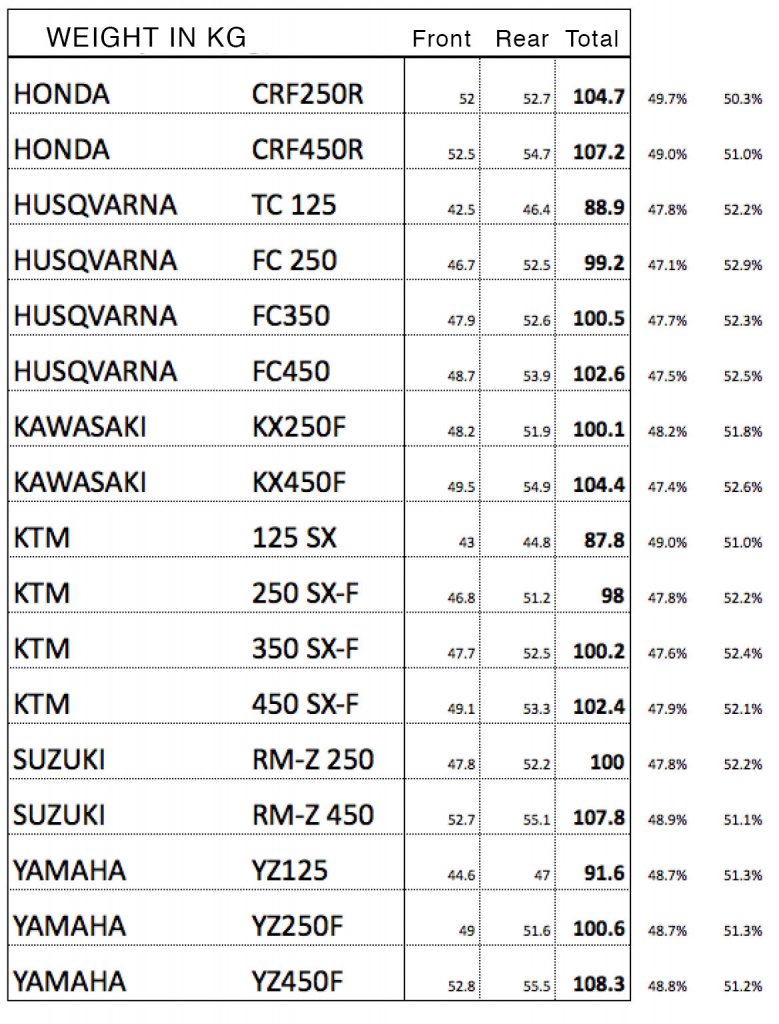
Sound as a pound!
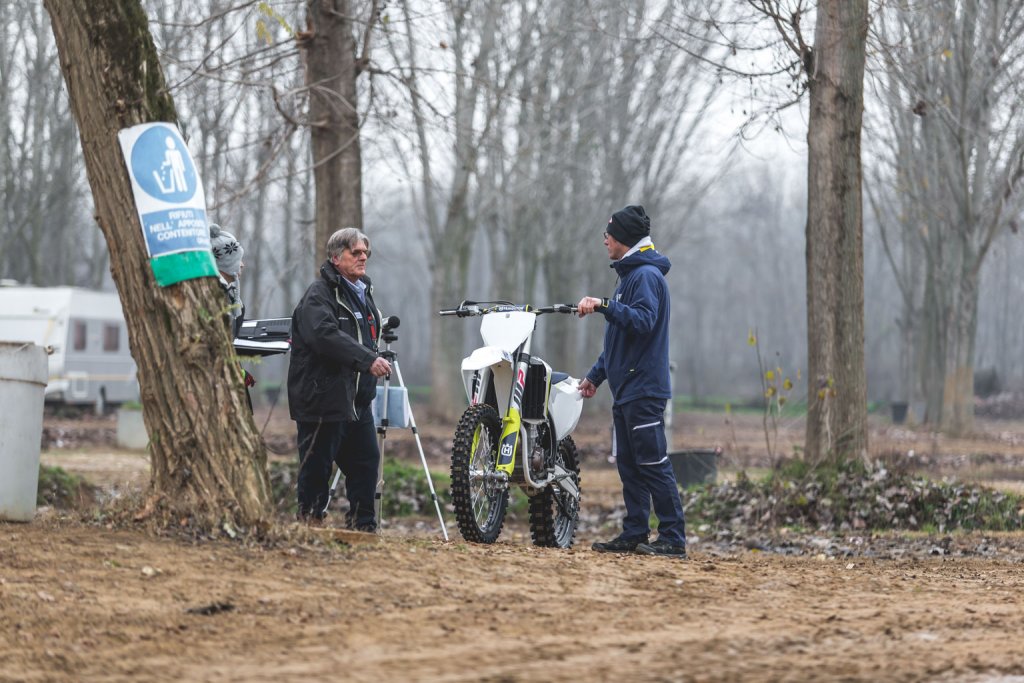
We also sound tested the bikes to see how close they were to the FIM limit. This was done by an official of the Italian federation to make sure it was above board, and shows how some bikes adhere to the limit but others are noisier. A louder pipe can often unleash a bit more power, of course. But not always! Here is the standard FIM noise test results in dB. And check out how quiet the 125s are! No wonder we’re losing tracks!
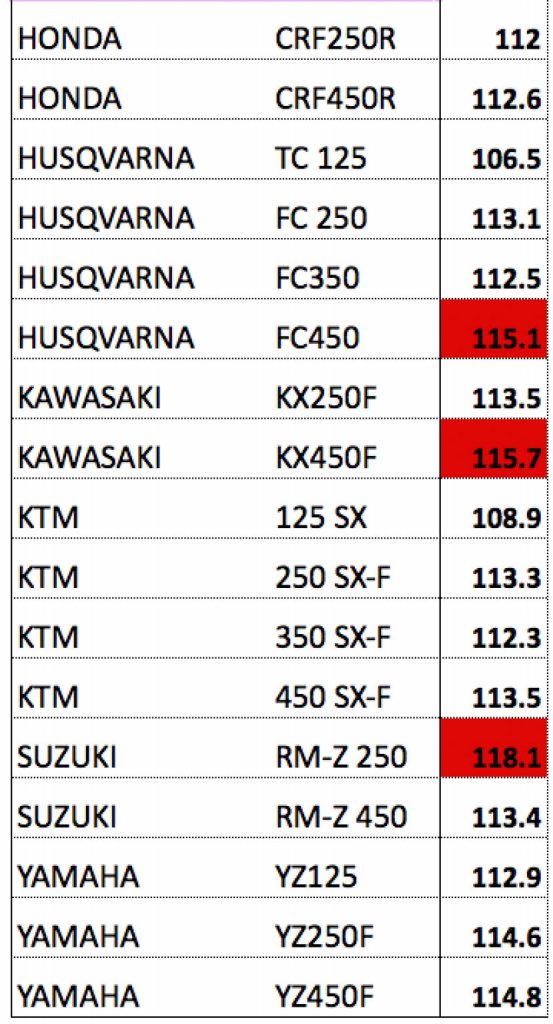
First published – MotoHead Issue 14 – January 2018
By Adam Duckworth
